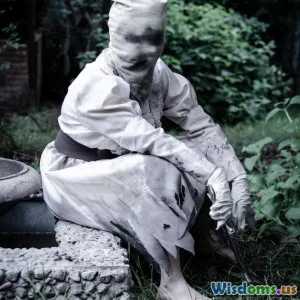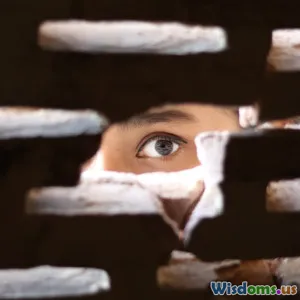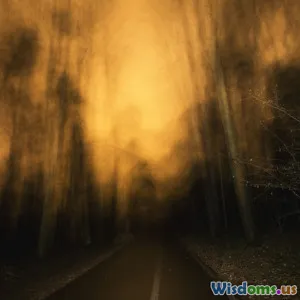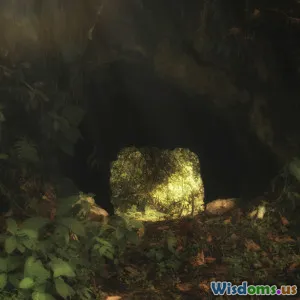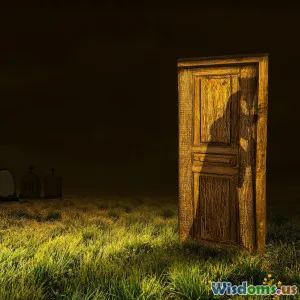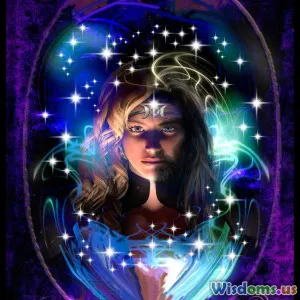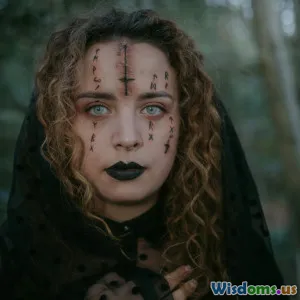
Comparing Shadow People With Historic Poltergeist Reports
9 min read An in-depth exploration comparing shadow people phenomena with historic poltergeist reports, revealing similarities, differences, and cultural insights. (0 Reviews)
Comparing Shadow People With Historic Poltergeist Reports
Introduction
Shadow people and poltergeists have long captivated imaginations and haunted folklore worldwide. These mysterious phenomena, often encountered in dark or eerie settings, evoke both fear and fascination. Shadow people appear as dark human-like silhouettes, fleeting and ephemeral, while poltergeists are traditionally associated with disruptive physical activities in households. This article embarks on a thorough comparison of shadow people sightings and historic poltergeist reports, uncovering notable parallels, key differences, and what these experiences reveal about human psychology, cultural context, and paranormal investigation.
Understanding Shadow People
Defining the Phenomenon
Shadow people are described as dark, shadow-like humanoid figures that seem to lurk in the peripheral vision of witnesses. They often manifest as quick-moving silhouettes with distinctly human shapes but lack recognizable features. These entities are frequently reported in urban legends, paranormal circles, and even psychological studies. Notably, many experiencers mention an overwhelming sense of unease or dread during encounters.
One prominent example comes from a study spearheaded by parapsychologist John A. Keel, who collected numerous eyewitness accounts during the 1970s, attributing the sightings to an interaction of psychological and environmental factors.
Common Characteristics
- Appearance: Typically humanoid, devoid of detail, often wearing a hat or cloak-like shadow.
- Movement: Elusive and quick, often vanishing when directly observed.
- Location: Commonly near sleep—the transition between wakefulness and dreaming—or in dimly lit places.
- Sensation: Witnesses frequently report feelings of paralysis, anxiety, or intense fear.
Cultural Interpretations
Various cultures interpret shadow person sightings differently. For example, Native American folklore sometimes describes them as spirits or tricksters, whereas urban Western narratives often link them to supernatural or malevolent entities. Popular culture, notably films and literature, have entrenched shadow people as ominous, paranormal figures.
Historic Poltergeist Reports: An Overview
What Are Poltergeists?
The term "poltergeist" originates from German, meaning "noisy ghost." Historic poltergeist reports revolve around mysterious physical disturbances reportedly caused by unseen forces—ranging from object manipulation and loud noises to electrical disturbances.
One of the most famous cases is the Enfield poltergeist (1977-1979), wherein a London family experienced items moving, knocking sounds, and alleged levitations. Documentaries, police reports, and psychological assessments followed, highlighting the complexity behind such cases.
Traits and Common Themes
- Physical manifestations: knocks, bangs, objects moving independently
- Focus on specific individuals, often adolescents
- Fragile boundary between psychological and physical explanations
- Often temporary occurrences with inconsistent patterns
Historical Examples
- The Bell Witch (early 1800s, Tennessee): Reports included disembodied voices, physical assaults, and object movements centering around the Bell family.
- The Rosenheim Poltergeist (1967, Germany): A law firm experienced unexplained telephones ringing and objects flying, which baffled scientists investigating the phenomenon.
Key Comparisons Between Shadow People and Poltergeists
Visibility Versus Physical Interaction
Shadow people are primarily visual phenomena, with witnesses seeing entities without corresponding physical disruptions. In contrast, poltergeists are known for affecting the physical environment—objects levitate or noises are heard, causing tangible disturbances.
Psychological and Physiological Links
Both phenomena have ties to psychological states, including stress, trauma, and sleep disturbances:
- Shadow people are often reported during sleep paralysis episodes, where the brain is awake but the body is immobile, accompanied by hypnagogic hallucinations.
- Poltergeist activity often centers around psychological tensions in households, especially involving teenagers, leading some researchers to interpret poltergeist manifestations as unconscious psychokinetic energy.
Renowned psychologist William Roll explored psychokinesis and suggested that poltergeist activity could be a byproduct of unconscious emotional turmoil, whereas shadow people are more closely linked with visual misperception or neurological phenomena.
Cultural Context and Duration
Shadow people encounters often are fleeting, isolated events largely experienced by individuals. Conversely, poltergeist cases tend to be communal and persist for extended periods, involving multiple witnesses. This communal aspect has amplified poltergeist stories over centuries, embedding them deeply in cultural consciousness.
Scientific Investigations and Skepticism
Scientific scrutiny has challenged both phenomena:
- Shadow people are often discussed in neurological terms—linked to sleep paralysis, schizophrenia, and other brain states inducing hallucinations.
- Poltergeist cases have been scrutinized for fraud, psychological explanations, and environmental causes like infrasound or seismic vibrations.
In both fields, no conclusive evidence exists to confirm supernatural origins, yet the persistence of reports sustains further inquiry.
Real-World Insights and Case Studies
Shadow People in Modern Media and Research
Modern accounts frequently occur in online paranormal communities. For instance, the contemporary "shadow man" famed for wearing a fedora has become a phenomenon highlighted across YouTube and paranormal podcasts. This digital documentation provides researchers with an evolving dataset, examining commonalities in experiences and physiological states.
Researchers like Dr. Devon Hensel have argued these encounters must be studied within the framework of neural mechanisms involved in visual hallucinations and threat perception.
Historic Poltergeists: Lessons from the Past
Historic cases such as the Rosenheim poltergeist were documented using pioneering electronic surveillance methods, showing that while reports were dramatic, activity was often erratic and linked to specific stressors. This has influenced modern investigations to cautiously separate suggestibility and environmental factors from presumed paranormal events.
Conclusion
Shadow people and historic poltergeist reports occupy a captivating niche within paranormal lore, bridging folklore, psychology, and cultural storytelling. While shadow people tend to be visual, fleeting, and individually experienced, poltergeists involve physical phenomena affecting multiple people over extended periods.
Scientific advances suggest psychological and neurological underpinnings for both, though an air of mystery persists due to incomplete explanations and firsthand intensity of experiences. Understanding these manifestations enriches our grasp of human perception, cultural fears, and the vitality of storytelling.
Whether you approach these phenomena as metaphor, neurological anomaly, or supernatural enigma, their persistent presence in human narratives underscores a fundamental curiosity to explain the unexplained—a curiosity that continues to inspire research, storytelling, and the pursuit of the unknown.
References:
- Keel, J. A. (1970s). The Mothman Prophecies. UFO and paranormal accounts collection.
- Roll, W. G. (1970s). Research on psychokinesis and poltergeist phenomena.
- The Enfield Poltergeist: BBC documentaries and police testimony archives.
- Hensel, D. (2020). Neuropsychology of hallucinations related to shadow person encounters.
- Transcripts and historical reports on the Bell Witch and Rosenheim poltergeist cases.
Rate the Post
User Reviews
Other posts in Paranormal Phenomena
Popular Posts










